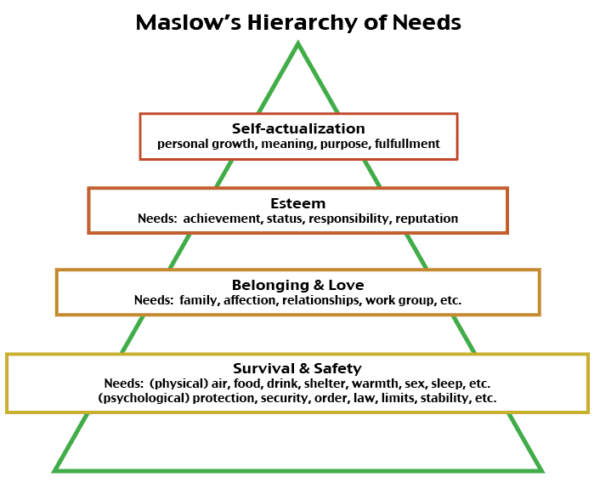Lately, wherever I find myself in dialogue with organizational clients or colleagues, the conversation eventually turns to the desire to be in like-minded community. As social beings, we find ourselves working and playing in a variety of f2f and online social networks. We may allude to them as families, teams, neighbourhoods, organizations, co-ops, cities, nations, Facebook, LinkedIn, etc. but they are all, by definition, intentional communities. I say that because each, though with varying levels of complexity and success, is designed for the purpose of high social cohesion and teamwork. Unfortunately, we may not find them to be collaborative or like-minded, nor may they fulfill our spiritual, physical, intellectual, communal and emotional (SPICE) needs.
This dis-ability or lack becomes the driving force for finding or creating our ‘right community’. Over the years, I experimented by joining several different versions — athletic, psychological, reading, writing, spiritual. Although none were ‘live-in’ as intentional communities are traditionally defined, all were certainly planned communities and intended to be cohesive and collaborative.
I include here examples of what traditionally are defined as intentional communities:
- Spiritual: Amish, Hutterite, Kibbutz, Mennonite, Mormon, Ashram
- Ecological: Global Ecovillage Network
- Egalitarian: Federation of Egalitarian Communities
- Co-housing: sharing common facilities like in Saettedammen, Denmark
The example below is illustrative of an emerging and more contemporary model:
- Economic: collaborative partnerships, peer-to-peer shared goods and services
Arguably, we need to expand the definition of intentional communities to include what we see emerging today. It was during a previous social and spiritual revolution — the 1960s and 1970s — when intentional communities first began to emerge in North America and Europe. That same emergent behaviour accompanies today’s social and spiritual revolution as witnessed by the multitude of online social networks, the mainstreaming of yoga as a spiritual practice, and the urban explosion of condominium and cooperative residential living.
An interesting variation on the condo model of intentional living is being erected right across the street from my home. Six young people (Gen Xers) cooperatively purchased and are demolishing two single-family dwellings to erect their condominium home. Of interest to me are their common roots. As residential and landscape architects, they bring a shared value base that outwardly includes ecological, egalitarian and economic principles. I am inclined to guess their spiritual belief systems tolerate and encourage not just collaboration but creative contribution and compassion. In essence, these creative collaborators are integrating the traditionally segregated purposes for communal living.
One difference between today’s social/spiritual revolution and that of the 60s may be the greater numbers of people aware of themselves as whole beings. I suggest, for humanity in general, the contemporary learning journey is about creating balance and harmony within oneself, between each other and among all beings. We accomplish this by first integrating our five intrapersonal aspects — SPICE — which amounts to ensuring our survival and safety, our sense of belonging and love, our esteem and our self-actualization (see Maslow’s Hierarchy of Needs below).
 Maslow supposed the realizing of these needs as a more linear process with those on the bottom levels acquired first. Only when we accomplished such development could we then aspire to self-actualize. With the increased complexities and pace of today’s world, we are more likely to find ourselves juggling surviving with self-actualization or thriving. As evidenced by Julia Cameron’s statement below, balancing our passion and purpose (thriving) with surviving is the integrative journey to expressing our potential — our authentic self.
Maslow supposed the realizing of these needs as a more linear process with those on the bottom levels acquired first. Only when we accomplished such development could we then aspire to self-actualize. With the increased complexities and pace of today’s world, we are more likely to find ourselves juggling surviving with self-actualization or thriving. As evidenced by Julia Cameron’s statement below, balancing our passion and purpose (thriving) with surviving is the integrative journey to expressing our potential — our authentic self.
Each of us has an inner dream that we can unfold if we will just have the
courage to admit what it is, and the faith to trust our own admission.
The admitting is often very difficult.
What we really want to do is what we are really meant to do. When we do
what we are meant to do, money comes to us, doors open for us, we feel useful,
and the work we do feels like play to us. Julia Cameron
If intrapersonal integration is self-actualization, then interpersonal and collective integration are social-actualization — humanity’s next evolutionary step on the need’s hierarchy. In order for social integration to emerge more visibly, every human must both self-actualize and survive. This feels like a monumental task given the civil strife, poverty and injustice witnessed globally. Nonetheless, the tipping point where global consciousness shifts to recognize “we are our brothers’ keepers” is approaching. My intention for experiencing this type of community is in my lifetime.
What is your vision of intentional community?
What one act can you take to move yourself closer to actualizing this vision first for yourself, then for all beings?





